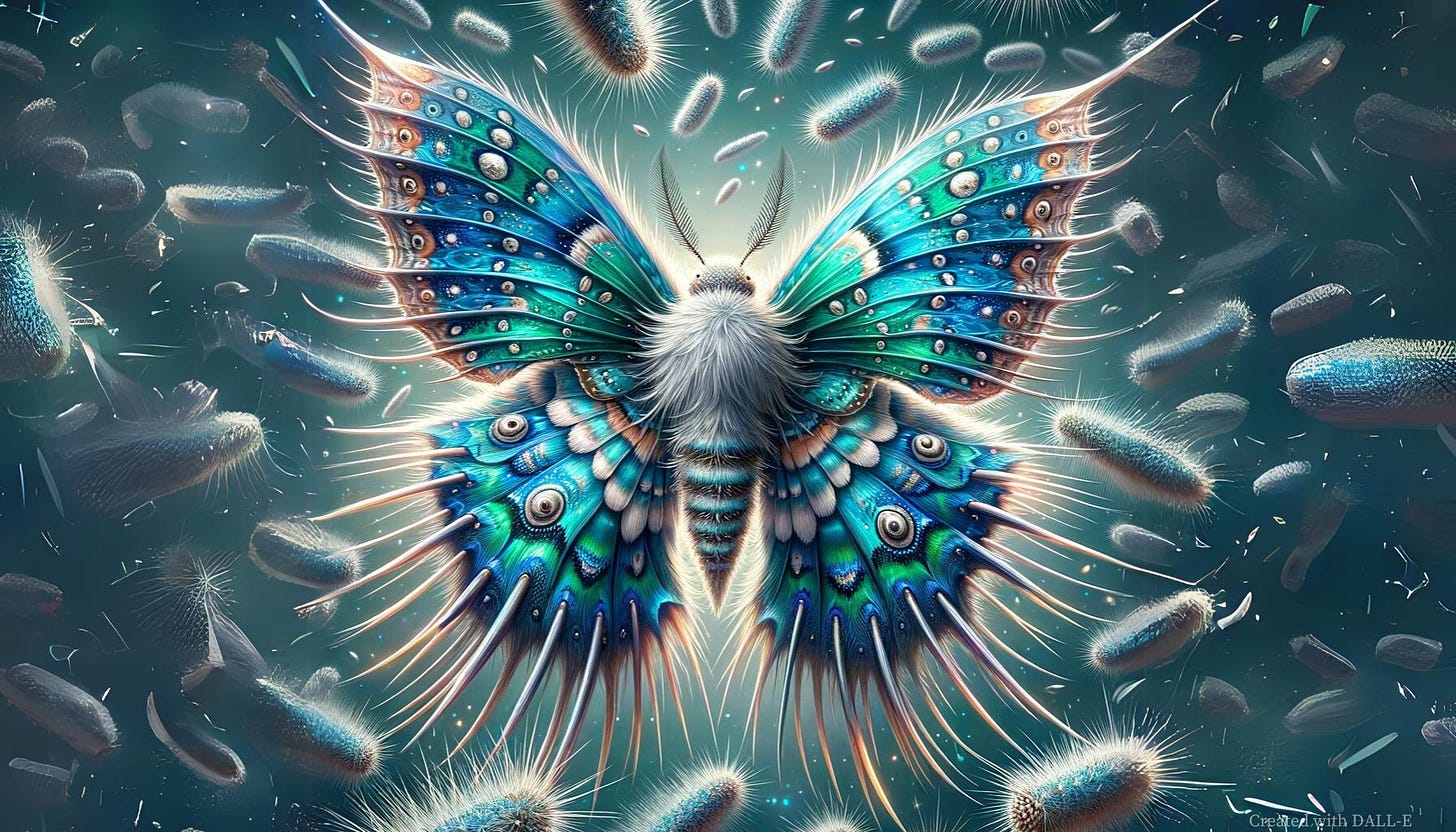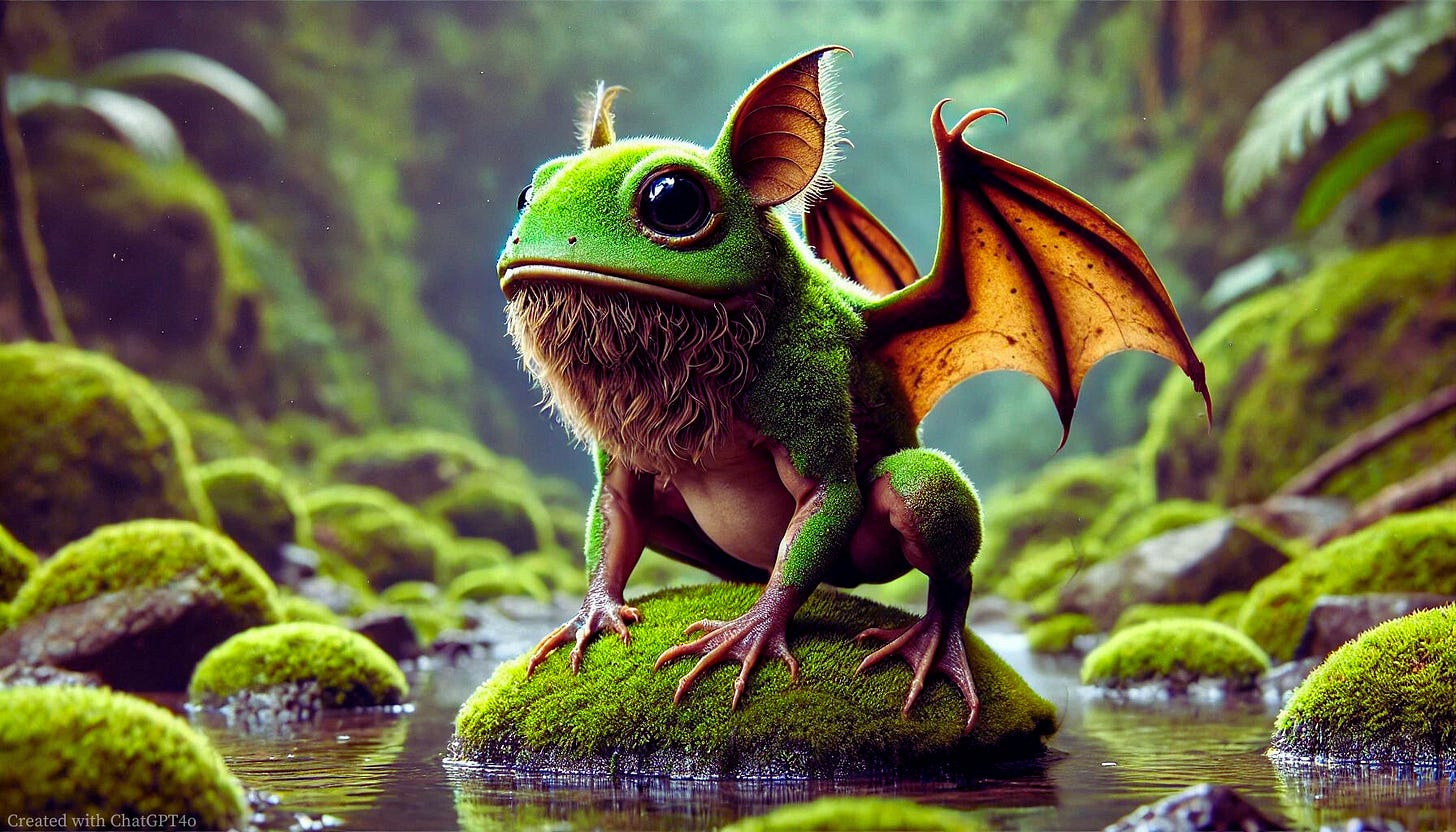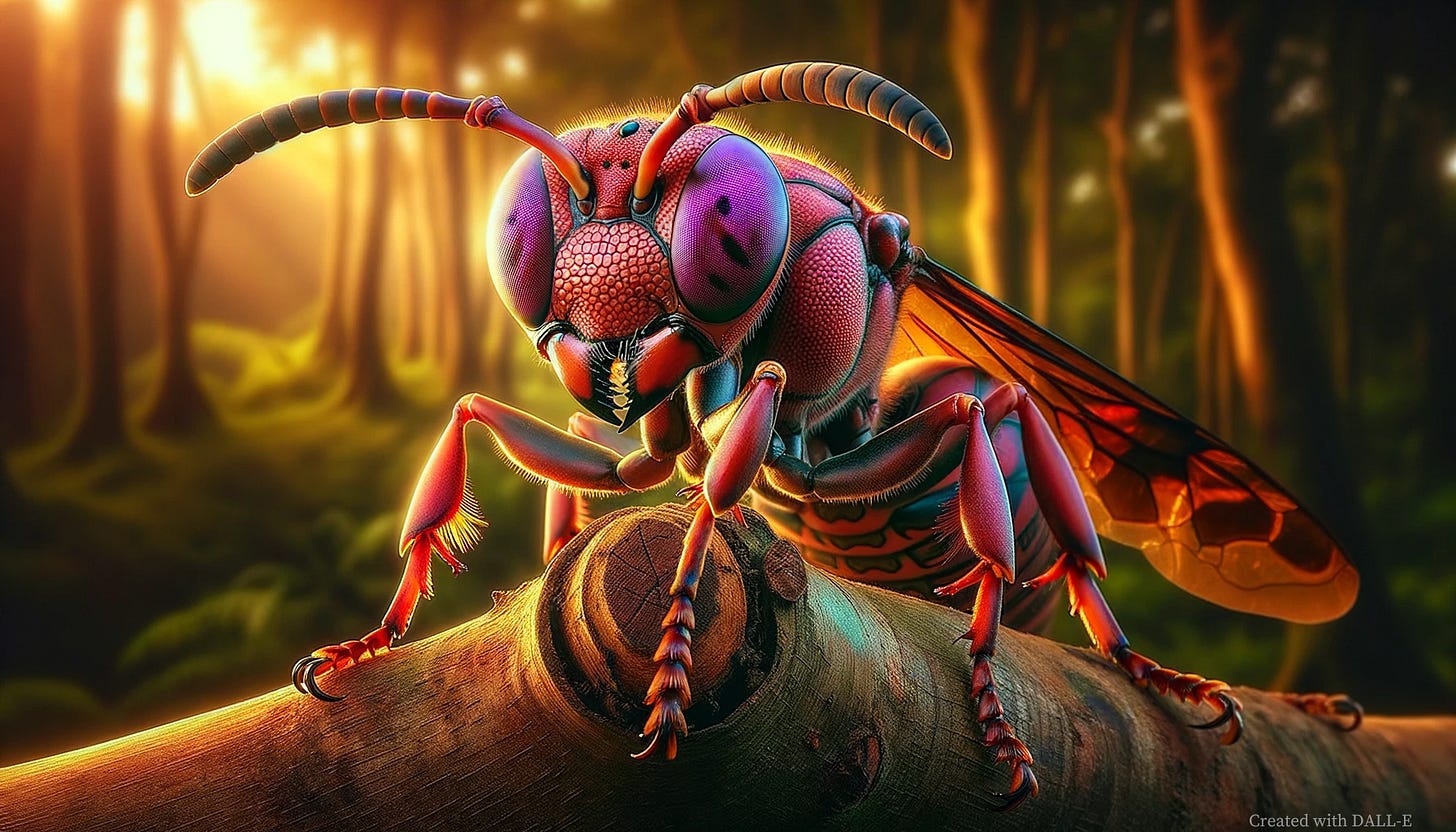
This is Hanlon’s Reader, an independent author’s publication. Here you’ll find stories, books, essays, and other things. I’ll be tinkering away here for a while.
If you’re using a web browser to read, you can use these links to help find your way:
📗Short Stories | 📘Books | 📙Personal Essays | 💌Newsletter | ❓About | 🏡Home
App Users: the categorized Tag links above don’t work in-app, so you may find it easier to use the Content Calendar or direct links to story posts to navigate my publication.
📗A Compendium of Beasts, Bugs, and Botany
1 | 2 | 3 | 4 | 5 | 6 | 7 | 8 | 9 | 10

The Lotus Wasp Queen is matriarch of her brood, an equally capable leader, warrior, and builder. Queens who establish new hives seek out areas rich with lotus fruit, which they feed on exclusively. Using chewed wood pulp, she creates a sturdy hive and lays her first worker eggs within—the new hive’s foundation. 
Lotus Wasp Warriors, regardless of their sex, are born sterile. They spend their lives aggressively defending the hive and expanding into new territory, clearing the way for future queens to build hives in favorable locations. Like queens and sentinels, warrior wasps’ chitinous exoskeletons provide extra protection. 
Like the worker wasps, Lotus Wasp Sentinels are generally considered docile unless the hive is threatened, or alerted by a queen’s pheromone signals. In addition to specialized soothing pheromones, sentinel wasps control workers and warriors with vocal trills that are often mistaken for music or birdsong. 


Octopiders, colloquially named for their Earth-based doppelgangers, are a pervasive species with wide evolutionary variety due to their adaptive nature. The planet Surface's unusual tendency for interconnected, globe-spanning river systems instead of large seas and oceans, combined with this creature's amphibious roots and innate curiosity, have enabled the octopider's many forms to flourish. They are often excellent hunters with voracious appetites. 
The Quillworm may look innocuous, perhaps even cute—but this creature has a deadly and insatiable craving for blood. Somewhere between earthworm and caterpillar, its sharp, needle-like fine barbs form a thick defensive “fur” coated in a natural anesthetic. Typically it is able to pupate after a single feeding. 
The beautiful Quillmoth does not share its larval form’s thirst for blood. In fact, it doesn’t feed at all. These ephemeral bugs take flight for just one day before they die. Females retain their sharp needles, while the males shed theirs after pupation in favor of greater wingspan. Mating is almost always a fatal endeavor for the males, leaving the females to secure their clutch of eggs alone. Bearded Mossy Croakbat

📗Short Stories | 📘Books | 📙Personal Essays | 💌Newsletter | ❓About | 🏡Home












Aaah get out of my brain! Octopider 1 is exactly the shape and leg/joint style I was envisioning for my spacefaring nursebot droid
Neat! This seems very comprehensive.